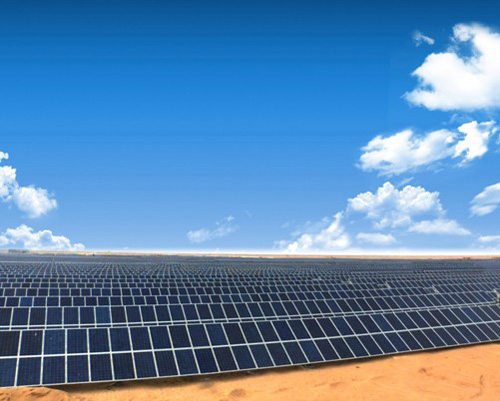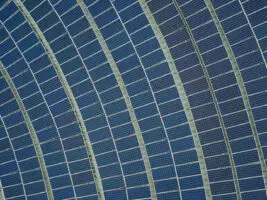Bids for the ACT government’s innovative solar tender are due to be filed by the close of trade on Tuesday, with speculation mounting that there could be some jaw-dropping offers that could help reshape the future of energy generation in Australia.
The ACT is accepting offers for the first 40MW of its planned renewable energy tender. Developers of solar PV projects ranging in size from 2MW to 20MW are invited to set the tariff they will receive from the ACT government, in an auction designed to allow the market, rather than bureaucrats, to set the price.
When we wrote about the tender in February, we suggested a price of 12-15c/kWh could be achieved, an expectation that has been boosted following some spectacular results announced late last week from similar auctions in California.
California’s Renewable Auction Mechanism has delivered an average highest bid of US8.9c/kWh, almost exclusively for solar PV, although one of the three utilities involved in the auction did accept a bid from a geothermal plant and another from a wind plant.
Like the ACT auction, the California system also invites bids for a long term tariff (20 years) for projects up to 20MW. The system of bidders setting their own price and an expedited regulatory process is designed to get projects built more quickly than has been seen under either the MRET or the grants-based mechanisms deployed by the Federal Government. (The bids should also finally convince the government that its forecast cost curves in the draft energy white paper, which relies on predictions of solar PV to “fall” to 34c/kWh by 2035, are absurdly wrong).
According to California reports, Southern California Edison received 92 offers totaling more than 1200MW, (91 were for solar PV), and accepted 7 offers – two of 20MW; one 12MW; one 9MW; and three 2MW. PG&E received received 122 offers totaling 1470 MW and accepted four contracts – one 14MW geothermal power plant; one 9MW wind power project; two 20MW solar PV projects. San Diego Gas and Electrict accepted two solar PV projets totaling 15 MW out of a total 32 submitted.
In the US, the California results are being touted one of the first big milestones that has the potential to change the narrative around solar energy. It certainly validates what Energy Secretary Stephen Chu said about the cost curve for solar in the country, and its potential impact on the broader energy industry.
Several dozen bids are expected in the ACT auction, which will allocate up to 40MW of capacity, with around 20MW to go in a “fast track” process to developers that can quickly prove their bona-fides (and have grid connections and have access to land).
There are a couple of reasons why the ACT auction results may not go down low as the California results. It is not just about module prices – because they will be about the same as in the US – but due to the balance of system costs, which make up at least half the price. Australia’s lack of experience in deploying solar at utility scale – there has already been a fair bit of it in the US, and Australia is only about to begin installing the panels at its first 10MW project in WA later this week – means that the cost of solar PV is probably 2c-4c/kWh more expensive than the US.
That will not necessarily remain the case, but it will until more solar PV is deployed in Australia. One of the main differences comes in the cost of capital: Australian banks are not familiar with large-scale solar at all. However, as has been seen with the involvement of Denmark’s export finance corporation in the Macarthur wind farm in Victoria, and the interest shown by Chinese financiers in the Solar Oasis project in South Australia, competitive financing can be sourced from overseas. Labour costs are also higher in Australia than in the US, and the cost of leasing land in the ACT is also a wildcard.
But this auction will be closely watched by all in the industry, because the results of the bids could have big implications for future energy generation in Australia. Firstly, it could signal that solar PV is ready to compete with wind energy to acquit some of the 20/20 renewable energy target. That had not been expected until 2015/16/17.
Secondly, it may give utilities planning new gas generation pause for thought too, particularly those planned to meet peak demand in the southern eastern states. Signs of a wide deployment of solar will raise questions over the ability of such gas generators to compete in the longer term – see the merit order effect – even if peaking gas plant are relatively low capital cost.
Auctions are now used widely across the world. In India, it is being used to set the contract prices for its massive solar project, and a recent bid was set at $147/MW. In China, auctions ave set a price of around – in South Africa, an auction of 1.4 gigawatts of renewable energy capacity is expected to result in bidding well below the tariff caps . In Brazil, wind captured 80 per cent of the 1,200MW of power capacity in the last auction was awarded to wind farm developers because they were cheaper than gas, and put in average bids of just US5.5c/kWh.
According to Bloomberg New Energy Finance, at energy auctions in Brazil, Uruguay and Peru, wind farm and solar park developers have won contracts to supply power at rates close to or below fossil fuel-based power. Recent auction for solar PV capacity in China and India suggest that the cost of solar PV in that country is around 20 per cent above that of new build coal. Both countries predict that solar PV will be cheaper to build than new build coal by the end of the decade – in India by 2016.
One intriguing aspect of the ACT auction will be the approach of AGL, the joint owner of ActewAGL, the sole ACT utility. ActewAGL is expected to produce one of the bids, possibly for a project of around 20MW.
AGL has courted controversy over its campaign against feed in tariffs and its cautioning about the potential impact of the merit order effect on the existing electricity grid. In the ACT, it finds itself as potential project bidder, project developer, customer, and gatekeeper (responsible for providing connections for successful projects). Ironically, AGL managing director Michael Fraser was the first of the big three utility CEOs to identify the potential of large-scale solar in Australia and its rapid fall down the cost curve. Its actions in this tender will be watched with interest by everyone in the industry.
Postscript: A couple of people have pointed out another reason why the ACT solar auction result may be higher than the California result – the ACT tariff is a fixed price with no inflation adjustment, unlike the California auctions which do have one. One party suggested the lack of indexation might be worth 2-3c/kWh.






